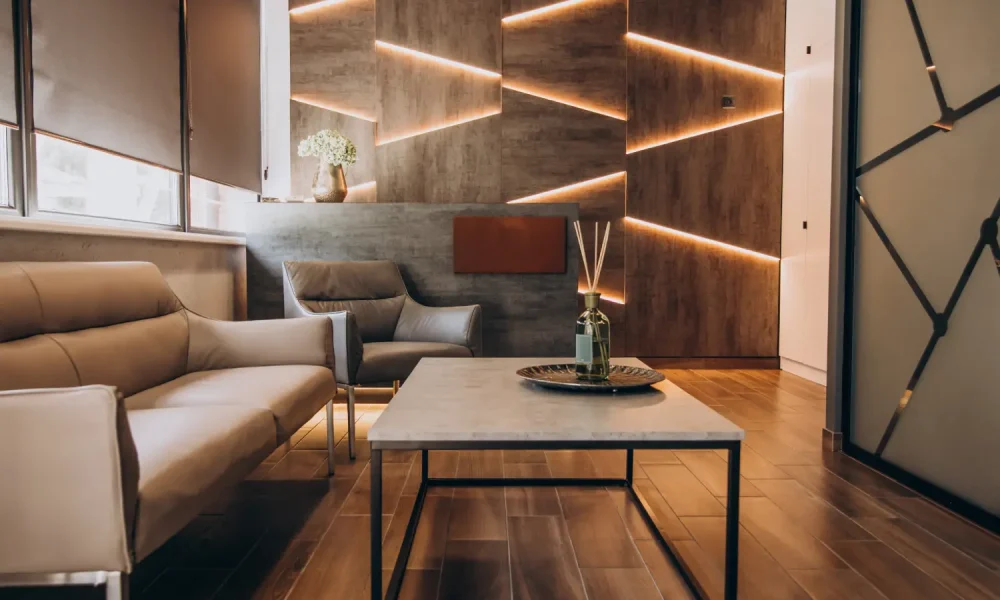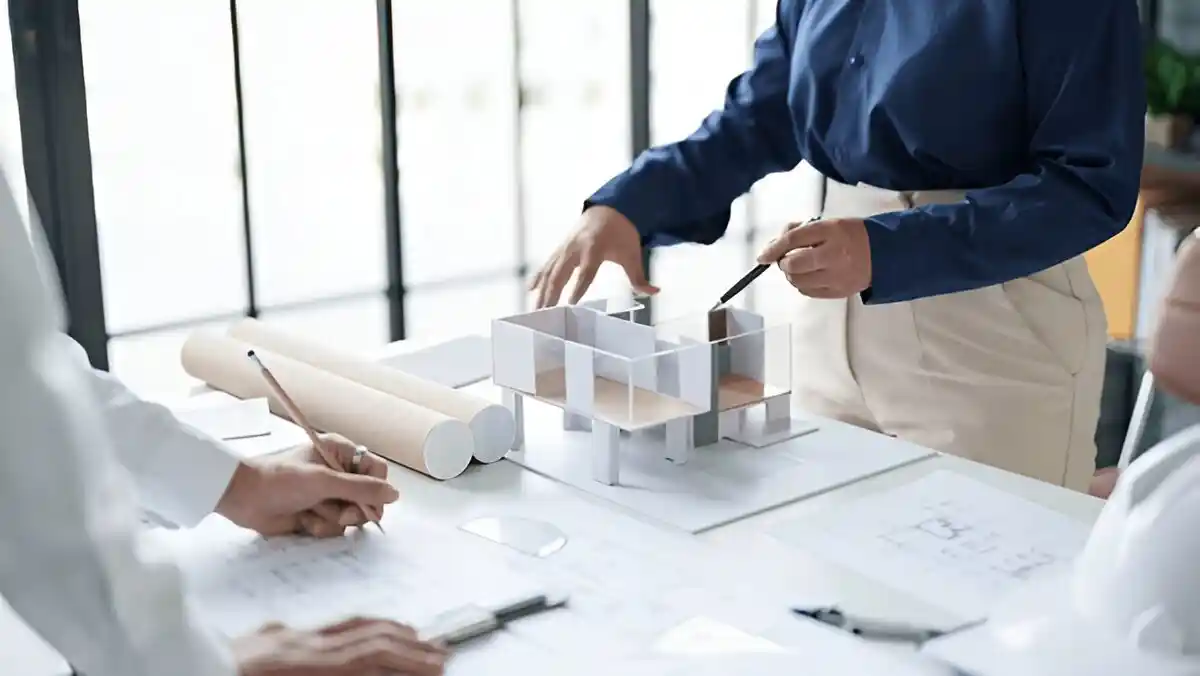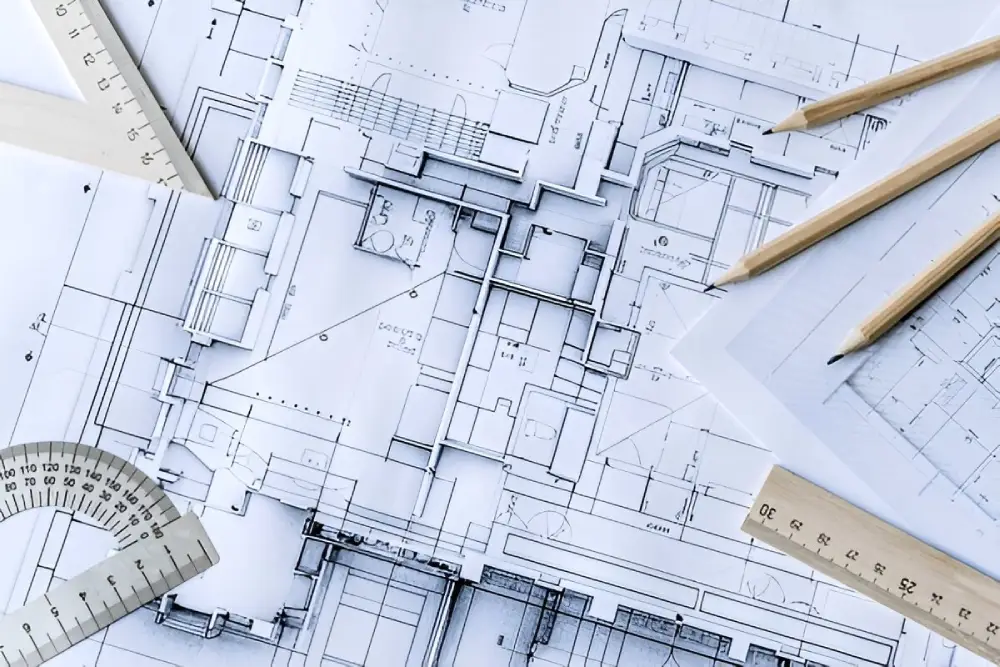The history of architecture and design dates back to ancient times and the birth of human civilisations in Mesopotamia, the Indus Valley, and Egypt. The concepts of proportion and harmony came from the Greeks; the arches and domes were popularised by the Romans; and there are multiple other examples of architectural and design metrics that were inspired by historic structures and buildings. Whereas, the art of interior design comes from a basic human need for aesthetic perfection through furnishing.
The job of an interior designer usually deals with conceptual development, programming, space planning, research, construction management, site planning, design execution, and communication. Thus, the study of architecture and interior design is obtained simultaneously to establish a correlation and context.
Interior Design & its Principles- Definition
The idea of the interior design course has branched out from the core discipline of architecture, and as the name suggests, this specific branch of architecture concerns itself with creating an interior environment that is based on both the aesthetic and functional aspects of the design. Interior design is often stated as an art, science, and business model that prioritises creativity, sustainability, technicality, and usefulness to every architectural project.
Interior design principles are derived from several elements linked to architectural expression, including consideration of structural space within buildings, the landscaping, the furniture, architectural graphics, and an internally detailed design approach. The basic principles that have the most obvious impact on the outcome and fruition of the project are space, scale, colour, proportion, pattern, symmetry, symbolism, etc.
The Complementary Relation Between Architecture & Interior Design
Understandably, architecture and interior design are two essential parts of building residential and non-residential structures, and artisans from both sides are equally important for the project to be finalised. While architecture focuses on the building structure and its elements, the purpose of interior design is to create an internal environment. Combining the two offers the most effective solution for building cohesive spaces.
The rise in functional cohesive designs readily proves the complementary relationship between architecture and interior design. The various types of architecture and design principles, and processes may hint otherwise, but that does not undermine the synonymity and compatibility factors that make the processes ever-binding.
Why an Interior Design Course After 12th is a smart choice
An interior design course after the 12th tends to cover a wide range of areas of architecture and emphasises developing design skills. Any building structure is incomplete without the interior design that makes the space functional for human needs and appears aesthetically pleasing to human eyes. The degree in interior design enables students to practice with a license to work as a landscape designer, consultant, product designer, illustrator, planner, researcher, interior architect, educator, photographer, interior journalist, lighting designer, media visualiser, scenographer, systems designer, and project manager, to name a few.
The fundamentals of interior design are taught under the core programme. Despite the theoretical knowledge, interior design courses after 12th also pay significant attention to building essential skills in design. The students are also required to submit a research or dissertation project and select elective subjects such as environment and sustainability, economics, public policy, and others.
The reason for pursuing an interior design course allows students to start from the basics and choose their specialisations wisely. The early exposure to a well-balanced, interdisciplinary curriculum and practical-based training creates the foundation required to study an advanced programme or work as a professional interior designer with architectural firms.

What Skills and Competencies Does an Interior Design Course Build?
A foundational course in interior design builds a set of versatile and transferable skills that are valuable in multiple professional domains. These include spatial thinking, technical drawing, computer-aided design (CAD), understanding of materials and finishes, and the ability to interpret architectural blueprints. Additionally, students develop a strong grasp of visual communication and storytelling, essential for client presentations and conceptualisation.
Beyond technical knowledge, interior design education also nurtures skills such as project management, teamwork, critical thinking, and decision-making. These are often fostered through studio-based assignments, collaborative projects, and critiques that encourage analytical reflection and iterative improvement.
| Skill Type | Examples / Tools | Application Area |
| Technical Skills | CAD software, technical drawing, blueprint reading | Design execution, architecture collaboration |
| Creative Skills | Visual storytelling, spatial aesthetics | Conceptualisation, client presentations |
| Analytical Skills | Critical thinking, design iteration, environmental psychology | Sustainable and user-centric design decisions |
| Project Skills | Planning, research, documentation, presentation | Studio work, academic submissions, professional planning |
| Soft Skills | Teamwork, decision-making, communication | Group projects, client interactions, leadership roles |
How Does Interior Design Intersect with Sustainability and Innovation?
In today’s context, interior design education is increasingly focused on sustainable practices and innovation. Courses explore the use of eco-friendly materials, energy-efficient lighting, and sustainable construction methods. Students are encouraged to consider environmental impacts, environmental psychology, and resource management in their design decisions.
Innovation also plays a crucial role, particularly in how students integrate digital tools, automation, and smart technologies into design solutions. The growing relevance of sustainable interiors makes it necessary for aspiring designers to engage with global environmental challenges and to offer practical responses through design thinking.
What are the Career Opportunities and Industry Demands?
The demand for qualified interior designers is steadily growing due to the expansion of real estate, hospitality, healthcare, and commercial industries. An undergraduate course in interior design can open pathways into these fields, where designers are tasked with optimising space, ensuring compliance with safety standards, and aligning design with user needs.
Moreover, the industry values designers who can work across a broad spectrum of styles, from contemporary minimalism to traditional aesthetics, depending on client briefs. With advancements in software and visualisation tools, interior designers are expected to bring a high degree of technical proficiency in addition to creative vision. Graduates may work in architectural firms, interior consultancies, corporate environments, or as independent practitioners.
| Career Role | Primary Function | Typical Work Setting |
| Interior Designer | Design functional, aesthetic interior spaces | Design studios, architecture firms |
| Lighting Designer | Plan and implement lighting schemes | Event venues, architectural projects |
| Product/Furniture Designer | Create bespoke furniture or home products | Studios, retail brands, freelance |
| Scenographer | Design visual settings for theatre/film | Media production houses, theatres |
| Interior Journalist | Cover trends and design news | Magazines, blogs, design agencies |
| Visualiser / CAD Specialist | Produce digital renderings and mockups | Tech-focused design firms |
| Heritage Space Consultant | Preserve and design within historic structures | Museums, conservation projects |
Why is Early Academic Training in Interior Design Beneficial?
Beginning an academic journey in interior design after the 12th standard allows students to develop a deep and comprehensive understanding of the discipline. Starting early offers time to explore theoretical foundations before advancing into specialisations such as lighting design, furniture design, exhibition design, or heritage conservation.
Furthermore, early training provides a structured environment for experimentation and failure, which are integral to the creative process. Students can build portfolios over the duration of their studies, participate in design competitions, and engage in fieldwork that enhances their practical knowledge. This structured academic grounding gives them a competitive edge in both higher studies and the job market.
Why Choose Jindal School of Art & Architecture for Interior Design Course?
Jindal School of Art & Architecture is an elite educational institution for pursuing a B.Des. degree in interior design with the skillset required for managing real-world projects with professionalism. The faculty at JSAA consists of educators, guest lecturers, and industry professionals who have vast experience and can be an even greater guide for aspiring students.
The state-of-the-art studios and computer labs at the JSAA are well-equipped to give students the technical knowledge required in an interior design course. JSAA’s connection to industry professionals and international architects offers a great chance for students to build networks, participate in workshops, and join internships. These early connections may also play a huge role in building a career or the future for many alumni members. If you are interested in the Interior Design programme and wish to pursue a degree from the Jindal School of Art & Architecture, visit our website. You can find our contact details on the page as well.





